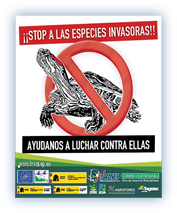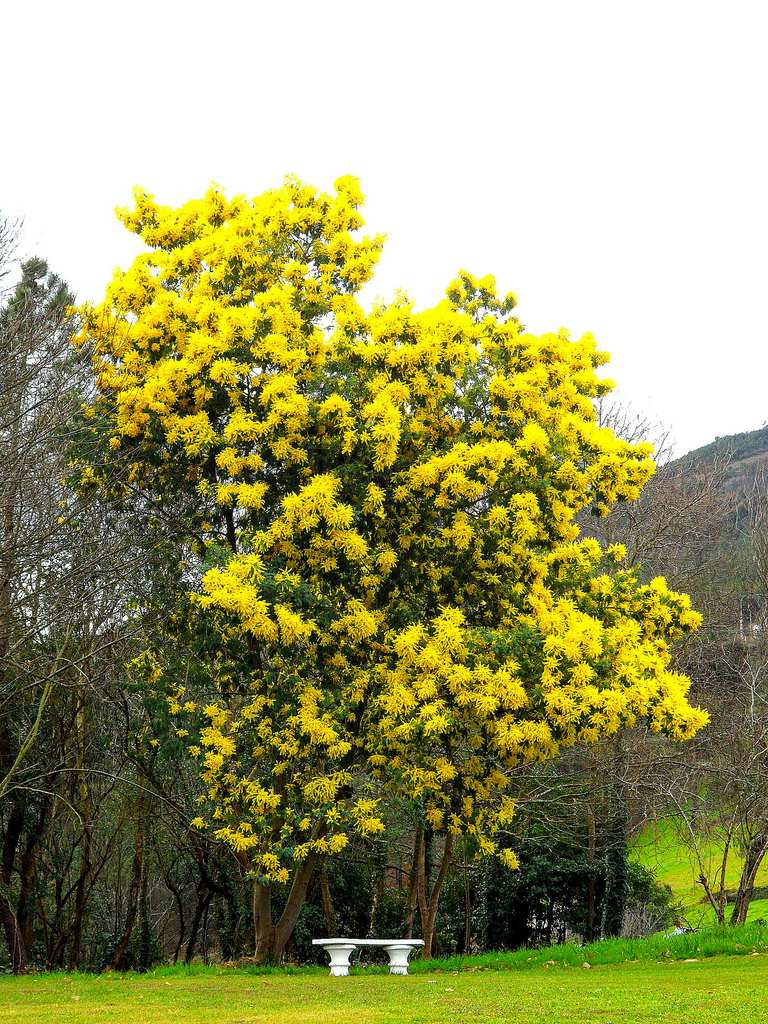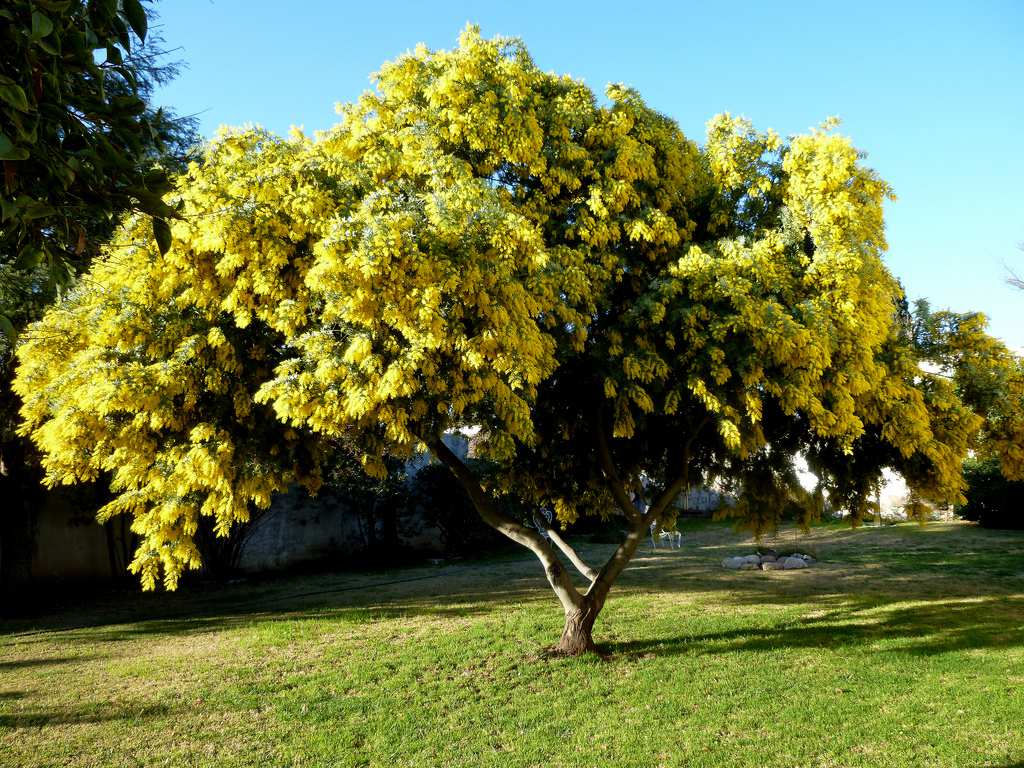

LIFE 10 NAT/ES/000582
Lucha contra las especies invasoras en las cuencas hidrográficas de los ríos Tajo y Guadiana en la Península Ibérica






Beneficiario Coordinador
Cofinanciador
Beneficiario Asociados


Colaboradores
© 2017 Consejería de Medio Ambiente y Rural, Políticas
Agrarias y Territorio - DG Medio Ambiente - GPEX
Con la contribución del instrumento financiero LIFE de la Unión Europea
Agrarias y Territorio - DG Medio Ambiente - GPEX
Con la contribución del instrumento financiero LIFE de la Unión Europea
Other languages


Its fruit is a 5-8 cm compact legume of green or reddish-brown colour, with a dozen of ellipsoidal seeds of 4-5 mm long.
Seeds are very resistant, and may be in a dormant state for many years, its germination being favored after fires..
Autoecology
Main habitat: it grows well in acidic soil, in sunny areas sheltered from wind.
Features of native and invaded ecosystems: it may grow in both bare soils or forest habitats. It can also grow in shallow soils with a certain degree of humidity.
Breeding season: it blossoms in winter or early spring. It is a pyrophytic species which easily regenerates from its seeds, and also from the stump after logging or after fires.
Seeds are very resistant, and may be in a dormant state for many years, its germination being favored after fires..
Autoecology
Main habitat: it grows well in acidic soil, in sunny areas sheltered from wind.
Features of native and invaded ecosystems: it may grow in both bare soils or forest habitats. It can also grow in shallow soils with a certain degree of humidity.
Breeding season: it blossoms in winter or early spring. It is a pyrophytic species which easily regenerates from its seeds, and also from the stump after logging or after fires.
Silver wattle (Acacia dealbata)
Species description
Rustic and evergreen tree, originally from Australia and Tasmania, which can reach up to 20 metres high in Spain.
Its trunk has a smooth, or slightly cracked, grey bark. It has pinnately compound leaves of around 10 cm long of silver green colour. Inflorescence is shown in round glomerules 5 mm in diameter, grouped at the same time in clusters or panicles. Flowers are of a bright and colorful yellow colour, pleasantly perfumed, with bell-shaped calyx and corolla.
Species description
Rustic and evergreen tree, originally from Australia and Tasmania, which can reach up to 20 metres high in Spain.
Its trunk has a smooth, or slightly cracked, grey bark. It has pinnately compound leaves of around 10 cm long of silver green colour. Inflorescence is shown in round glomerules 5 mm in diameter, grouped at the same time in clusters or panicles. Flowers are of a bright and colorful yellow colour, pleasantly perfumed, with bell-shaped calyx and corolla.
Tolerance to environmental stress factors:
Pathways of Introduction and Expansion
Its introduction in Europa took place around 1824. The date of its introduction in Spain is unknown, but it is thought to have happened in the second half of 19th century. It was mainly used for ornamentation, although it was also used to obtain gum arabic, essential oils, and dyes.
Current use in Spain: it is used in gardening, and also for logging, although to a lesser extent. It is also used to stabilize slopes in traffic infrastructures, and as a honey plant.
Main dispersal vectors: this species spreads by itself, and also helped by the action of animals in surrounding areas.
Its introduction in Europa took place around 1824. The date of its introduction in Spain is unknown, but it is thought to have happened in the second half of 19th century. It was mainly used for ornamentation, although it was also used to obtain gum arabic, essential oils, and dyes.
Current use in Spain: it is used in gardening, and also for logging, although to a lesser extent. It is also used to stabilize slopes in traffic infrastructures, and as a honey plant.
Main dispersal vectors: this species spreads by itself, and also helped by the action of animals in surrounding areas.
Impact
Ecological: it is a fast-growing species with a high capacity to produce new shoots. It can invade patches in the wood, sometimes originating monospecific groups. Its allelopatic compounds make it difficult for nearby native species to germinate, this way altering biodiversity and richness of soil microorganisms. This species is related to bacterias of the genus Rhizobium, due to nodules on its roots. It is a highly flammable species but, at the same time, its germination is favoured after fires; which is a great advantage over native vegetation when colonizing areas that have suffered this setback.
Publich health: its pollen is quite allergenic; it is responsible for cases of rhino-conjunctivitis, nephritic syndrome, and pollinosis.
Affected processes, communities and species: natural native vegetation.
Ecological: it is a fast-growing species with a high capacity to produce new shoots. It can invade patches in the wood, sometimes originating monospecific groups. Its allelopatic compounds make it difficult for nearby native species to germinate, this way altering biodiversity and richness of soil microorganisms. This species is related to bacterias of the genus Rhizobium, due to nodules on its roots. It is a highly flammable species but, at the same time, its germination is favoured after fires; which is a great advantage over native vegetation when colonizing areas that have suffered this setback.
Publich health: its pollen is quite allergenic; it is responsible for cases of rhino-conjunctivitis, nephritic syndrome, and pollinosis.
Affected processes, communities and species: natural native vegetation.
Geographical distribution in the project area

Mimosa - © Certo Xornal

Mimosa - © Nirene
Resistance to Pollution: High.
Resistance to High Temperatures: High.
Resistance to Salinity: Medium-Low.
Resistance to Frosts: Medium-High.
Resistance to Drought: Medium-Low.
Resistance to Insolation: Very High.
Resistance to Floods: Low.
Resistance to Intense Shading: Low.
Resistance to High Temperatures: High.
Resistance to Salinity: Medium-Low.
Resistance to Frosts: Medium-High.
Resistance to Drought: Medium-Low.
Resistance to Insolation: Very High.
Resistance to Floods: Low.
Resistance to Intense Shading: Low.
























